Clancy Tucker's Blog, page 178
August 19, 2017
20 August 2017 - STILL LIFE PHOTOGRAPHY

STILL LIFEPHOTOGRAPHY
G'day folks,
Here are some samples of still photography taken by clever photographers.












Clancy's comment: This is not everybody's cup of tea, but I'm impressed by some of these.
I'm ...
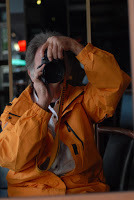

Published on August 19, 2017 14:53
August 18, 2017
19 August 2017 - FACTS ABOUT PIGEONS
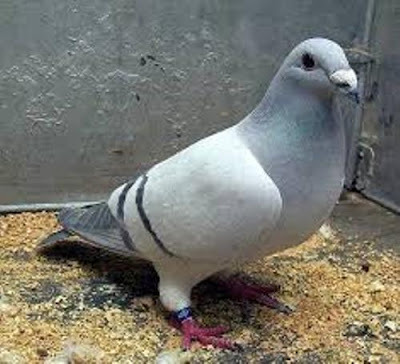
FACTS ABOUT PIGEONS
G'day folks,
Welcome to some facts about a very smart bird.
There are many theories about how pigeons manage to return ‘home’ when released 100s of miles from their loft. A champion racing pigeon can be released 400-600 miles away from its home and still return within the day. This amazing feat does not just apply to ‘racing’ or ‘homing’ pigeons; all pigeons have the ability to return to their roost. A 10-year study carried out by Oxford University concluded that pigeons use roads and motorways to navigate, in some cases even changing direction at motorway junctions. Other theories include navigation by use of the earth’s magnetic field, visual clues such as landmarks, the sun and even infrasounds (low frequency seismic waves).
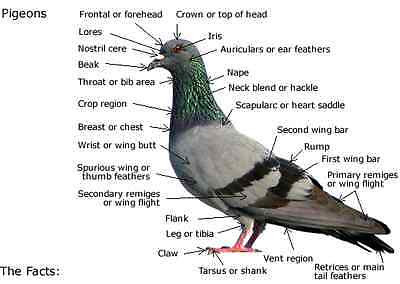
Whatever the truth, this unique ability makes the pigeon a very special bird.We normally think of the pigeon as being an unwelcome guest in our towns and cities, but most of us are unaware that racing pigeons can be worth huge sums of money. One racing pigeon recently sold for a staggering $132,517.00!
The 3-year old bird was a champion racer, beating 21,000 other pigeons in one long distance race. For this reason he was bought by a British company that breeds racing pigeons for ‘stud’. One very happy pigeon! The previous record price for a racing pigeon was $73, 800.00.
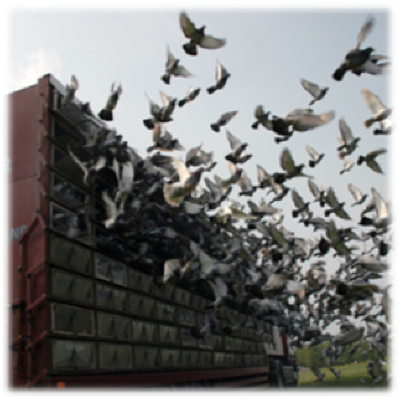
The pigeon has side-mounted eyes, unlike humans and owls which have forward facing eyes. As pigeons have monocular vision rather than binocular vision they bob their heads for depth of perception. The pigeon’s eyes function much better with stationary images and therefore as the pigeon takes a step forward the head is temporarily left behind. The next step jerks the head forward again and so on. This allows the bird to correctly orient itself.
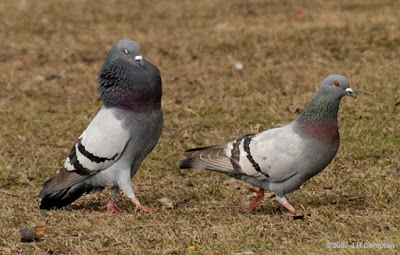
During the First World War a pigeon named Cher Ami (dear friend) saved the lives of many French soldiers by carrying a message across enemy lines in the heat of battle. Cher Ami was shot in the chest and the leg, losing most of the leg to which the message was attached, but continued the 25-minute flight avoiding shrapnel and poison gas to get the message home. Cher Ami was awarded the French ‘Croix de Guerre’ medal for heroic service.
The earliest large-scale communication network using pigeons as messengers was established in Syria and Persia around the 5th century BC. Much later, in the 12th century AD, the city of Baghdad and all the main towns and cities in Syria and Egypt were linked by messages carried by pigeons. This was the sole source of communication.
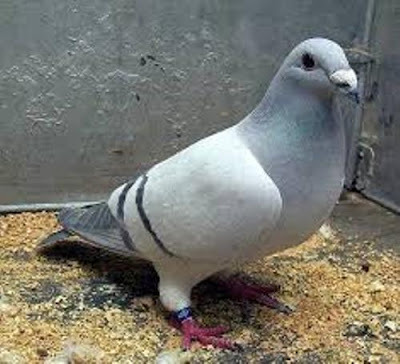
In Roman times the pigeon was used to carry results of sporting events, such as the Olympic Games, and this is why white doves are released at the start of the Olympic Games today. In England, prior to the days of telegraphs, pigeons were often taken to football matches and released to carry home the result of the game. Their use as a messenger in wartime resulted in many pigeons being awarded honours by both the British and French Governments.
Incredibly, the last ‘pigeon post’ service was abandoned in India in 2004 with the birds being retired to live out the rest of their days in peace.

Clancy's comment: My brother and I had pigeons as kids, and we enjoyed taking them miles away, letting them go and then riding our bikes home to try and beat them. We never did.
I'm ...

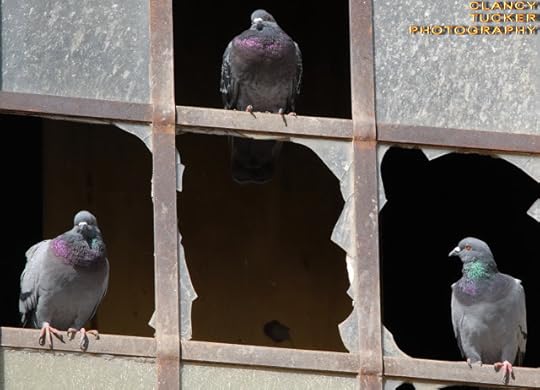
Published on August 18, 2017 15:22
August 17, 2017
18 August 2017 - SINGAPORE'S SHOPHOUSES

SINGAPORE'S SHOPHOUSES
G'day folks,
Ever been to Singapore? If you have, you will recall seeing one of their many shophouses.
Shophouses are known as such because of their ground floor shops for mercantile activity and separate private residences above. Historically the ground floor was occupied by a traditional shop, but the space can just as easily be a coffeeshop or bar, a clinic, a barber, an auto workshop or even a school or a bank. And if we’re talking about film-worthy architecture, there’s no shortage of drama when it comes to these colonial buildings, commonly seen in urban Southeast Asia, most notably in Singapore.
A riot of Wes Anderson pastels and quirky decoration, they evolved from the late 18th century but after the colonial era, became neglected, dilapidated, many abandoned, demolished or destroyed.
And get this– many shophouses have been known to be illegally sealed and used to cultivate and harvest edible birds nests, doing long-term internal damage to the buildings. Seriously. The edible birds nests, created with the solidified saliva of small birds from the swift family, are among the most expensive and rare animal products consumed by humans, particularly prised in Chinese culture due to their supposedly high nutritional value. Used in their cooking for over 400 years, most commonly bird’s nest soup, the Chinese believe it promotes good health, especially for the skin.
Now, here are some examples of these incredible establishments.


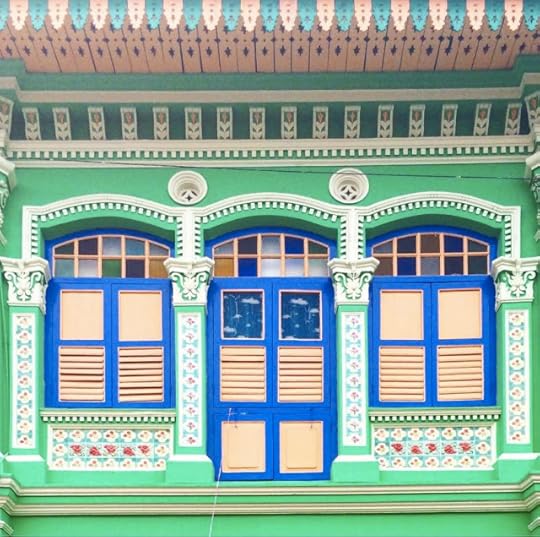









Clancy's comment: I've lived in a shophouse in Thailand, and I must say that they are great. They are spacious, and many like the one I lived in, had a rooftop area that was a fabulous place to take photographs.I'm ....
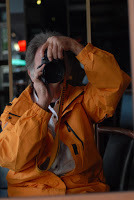

Published on August 17, 2017 14:16
August 16, 2017
17 August 2017 - INTERESTING FACTS ABOUT ELEPHANTS
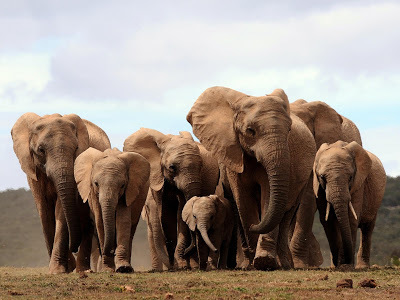
INTERESTING FACTS ABOUT ELEPHANTS
G'day folks,
Elephants are large mammals of the family Elephantidae and the order Proboscidea. Three species are recognised, the African bush elephant, the African forest elephant, and the Asian elephant.
Elephants are some of the most loved and admired creatures on earth. While coveted for their valuable ivory tusks, used to transport heavy cargo, or for primary symbolism in religious ceremonies, Elephants have become key figures not only in the animal kingdom, but also among many rural and traditional civilizations. Among the most commonly known facts about Elephantsare: they can weigh anywhere between 6,000 and 15,000 lbs; are herbivores that enjoy the occasional sweet banana and sugar cane; and love to travel and hunt in large pacts. But, there are so many unique and dazzling traits about the Elephant that are largely unknown. Below is a list of 10 facts about Elephants which may surprise the most observant Elephant lover.
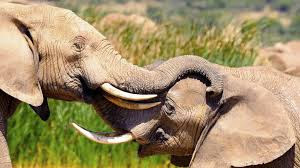
1) Ever wondered how groups of Elephants communicate with each other over long distances? Their infrequent whine would be a good guess, but not nearly as awesome as the answer. Studies show that pacts of Elephants can stomp the ground with their feet, sending sub-sonic ripples through the ground, which the receiving pact can collect through the sensitive nerves in their feet! This ground-shaking rumble is so powerful and fast, it is transported faster than sound waves through the air.
2) Yes, Elephants are herbivores, but that doesn’t mean that they will simply eat anything that wasn’t in the form of a dead specie. Elephants actually have food preferences and peanuts is most certainly not one of them. Elephants detest the woody taste of peanuts so much, they avoid them in the wildlife and when in zoos, keepers are careful to remember not include them in their diet.
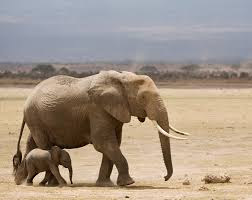
3) Elephants don’t just have an infatuation with sand, it’s a necessity for them. Despite their seemingly tough, weather-worn wrinkled skin, Elephants have the tendency to get sunburned. To avoid suffering under harsh rays of sunlight, Elephants douse their bodies in sand by using their trunks to toss it over their backs and legs. This procedure serves as a skin protector against rays and irritating insects. Elephants also take care to rub their young in sand, as their skin is more sensitive.
4) How much food and water must an Elephant consume everyday to stay strong and healthy? Elephants require up to forty gallons of water per day, and need as much as 400 pounds of food daily in order to survive.

5) While humans have only two sets of teeth in their lifetime (milk teeth and permanent), Elephants gain six sets of twenty-six teeth over the span of their seventy years. Each new set of teeth push the old ones out and take root. If this process is for some reason prohibited, an Elephant can face death by starvation.
6) Tusks are, along with the trunk, the most recognizable traits of an Elephant. However, unlike the African Elephants, not all Asian Elephants have tusks. The female Asian Elephants do not have the privilege of tusks and only some of the male Asian Elephants are born with these highly sought after traits.
7) The Elephant can dazzle observers with their ground communication techniques, walk at the crawling pace of four miles per hour, and can actually swim for long distances at a time. What the Elephant cannot do is jump because of its enormous weight, or gallop away when under threat.

8) Massive Elephant herds are led by the most experienced or aged Elephant who is a matriarch. Both female and males will follow her lead, but for males, they tend to leave the herd after twelve years to join their male peers.
9) The legs of an Elephant are perhaps the strongest parts of its entire body. Carrying more than 6,000 lbs of weight, the Elephant’s legs don’t get easily fatigued, because the Elephant does not sleep lying down. So sturdy are it’s pillar-like legs that the Elephant simply falls asleep standing up for two to three hours at a time before returning to eat or migrate from one destination to the next.
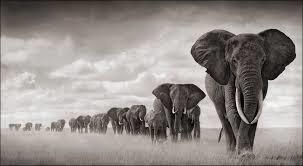
10) There are thousands of nerves in an Elephant’s trunk, and many observations over years have proven that Elephants are extremely emotional creatures capable of mimicking sounds, feeling sadness, glee, and anger. Even more interesting is how many emotional or traditional traits Elephants have in common with humans. Young Elephants suck their trunks for comfort just as young human infants suck their thumbs. In terms of tradition, Elephants become very attached to each other in pacts, so when an Elephant grows old or sick, its fellow Elephants band together to help the Elephant eat, drink, and stand. When such nurturing methods fail and the Elephant dies, funeral processions are held where Elephants pause their travels, have silence, grieve, and finally, bury the Elephant by digging a ditch and covering the body with sand.

Clancy's comment: I've seen hundreds of them over the years, and I still enjoy watching them. An amazing creature.
I'm ...

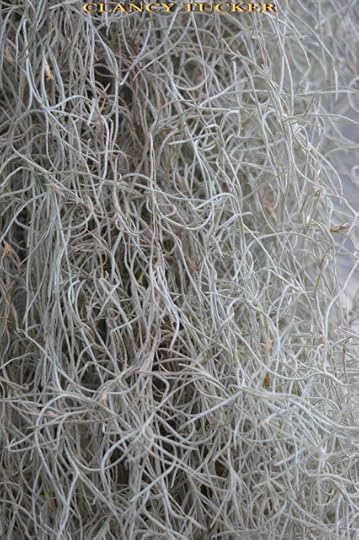
Published on August 16, 2017 14:06
August 15, 2017
16 August 2017 - Jean-Gabriel Domergue (1889 – 1962)
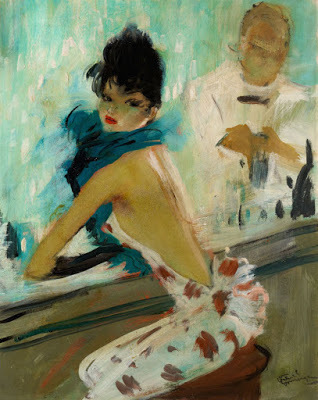
Jean-Gabriel Domergue (1889 – 1962)
G'day folks,
This artist was a French painter who specialised in portraits of Parisian women and claimed to be “the inventor of the pin-up”. In 1911, he was a winner of the Prix de Rome and also designed clothes for the couturier Paul Poiret. From 1955 until 1962 he was the curator of the Musée Jacquemart-André, organising exhibitions of the works of Van Gogh, Toulouse-Lautrec, Goya and others. In 1938, he was a member of the jury for Miss France.
He died 16 November 1962 on a Paris sidewalk.
Here are some samples of his work.







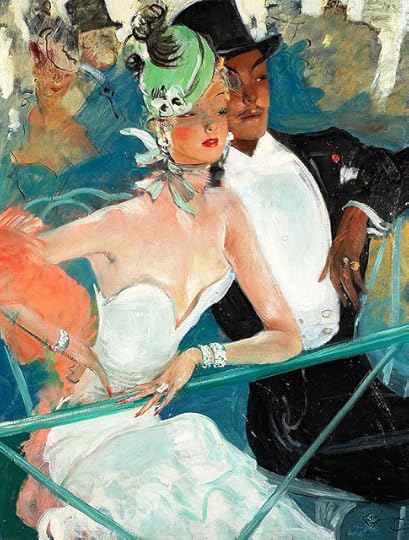


Clancy's comment: Interesting, eh? I do think the hats on the models are quite elegant.
I'm ...


Published on August 15, 2017 14:59
August 14, 2017
15 August 2017 - MARGARET ANN SPENCE - Guest Author

MARGARET ANN SPENCE- Guest Author -
G'day folks,
I am pleased to provide my interview with a woman who has had an interesting life. Athough born in Australia, she now resides in the USA, and has done for many years.
Welcome, Margaret ...
1. TELL US A LITTLE ABOUT YOURSELF AND YOUR WRITING JOURNEY. My aunt, Nan Hutton, was a journalist in Melbourne for forty years. She started when her sister, my mother, sent some of her wartime letters to the newspaper, which published them and offered her a job. She had a career and she was also a mother and her columns often tackled issues of women's rights. So from these two women I learned that if you write well, someone might take notice. Besides which, English composition was my best subject in school, in fact the only one I was really good at.
2. WHEN AND HOW DID YOU BECOME A WRITER? I studied journalism at Boston University and worked in public relations, writing reams of press releases. But it was not until a few years ago that I ventured into fiction. I used to feel that "making things up" was self-indulgent. But now I see that fiction is a way of getting at the truth.
3. WHAT TYPE OF PREPARATION DO YOU DO FOR A MANUSCRIPT? DO YOU PLAN EVERYTHING FIRST OR JUST SHOOT FROM THE HIP? I usually have an idea of a basic conflict between the main characters. Then I figure out what motivates them and how this drives the conflict. This is all written out but it is not the actual writing of the story. I have an idea of the ending but sometimes the actual ending surprises me as I start writing and get deeper into the story.
4. WHAT DO YOU ENJOY MOST ABOUT BEING A WRITER? That you can do it anywhere at any time.
5. WHAT IS THE HARDEST THING ABOUT BEING A WRITER? Well, if you think you can make a living at it you would be deluded. There are exceptions of course, like J.K. Rowling, but in general, you must juggle other work to keep the wolf from the door.
6. WHAT WERE YOU IN A PAST LIFE, BEFORE YOU BECAME A WRITER? I've always worked in the publishing world. My first job was with Penguin Books (Australia), then Walkabout Magazine before coming to the USA.
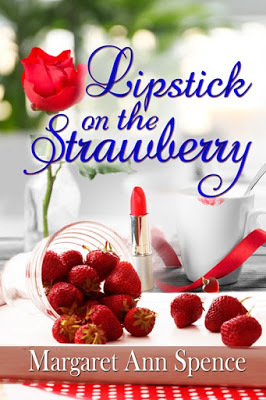
7. WHAT IS YOUR GREATEST WRITING ACHIEVEMENT? Finishing any book feels really great. Actually getting a novel published is even better. My book, Lipstick on the Strawberry, will be published on July 5 2017 by The Wild Rose Press. It is available for pre-order now at
http:thewildrosepress.com and www.amazon.com.
8. WHAT ARE YOU WORKING ON AT THE MOMENT? In the drafting stages of a new novel. I have a short story I'm working on, too, but short stories are not really my skill set.
I also blog at www.margaretannspence.com. What I do mostly on that site is to review and thus promote the work of other women writers, most of them little known.
9. WHAT INSPIRES YOU? Being deeply immersed in family life myself, I find themes of family conflict and resolution always a source of ideas.
10. WHAT GENRE DO YOU WRITE? Women's fiction. I like to see how characters develop under the stresses of life. While all novels have to have some element of mystery to keep the reader turning pages, I don't write crime, spy or political works at all.
11. DO YOU HAVE ANY TIPS FOR NEW WRITERS? First, take seriously the notion that writing is a profession. Therefore, you must make time to write every single day. Second, join a writers' group and/or take some writing classes. You need to get the writing out into the smaller world of beta readers in order to improve. Everyone writes a bad first draft, and it's just the first step. So third, recognize that writing a book that will be published takes time and much revision.
12. DO YOU SUFFER FROM WRITER’S BLOCK? Sometimes. Reading over the last few chapters and mapping out several directions the story can go helps. Letting the imagination go wild and knowing that the characters couldn't possibly do this or that can create a path forward.
13. DO YOU HAVE A PREFERRED WRITING SCHEDULE? I'm a morning person. So yes, morning is the best time for me to work.
14. DO YOU HAVE A FAVOURITE WRITING PLACE? Working on a laptop allows one to write anywhere. But I like a comfy chair and a coffee table or ottoman to put my feet up and rest the laptop on my legs. Also with a cup of coffee to hand.
15. WHAT IS YOUR GREATEST JOY IN WRITING? Just the sheer joy of brain communicating with hand. And the discovery that sometimes I don't know what I think till I have actually written it down.
16. WHO IS YOUR FAVOURITE AUTHOR AND WHY? That ultimate women's fiction writer, Jane Austen. Writing within a constrained world she nevertheless delivered stinging social commentary with wit.

17. WHAT’S THE GREATEST COMPLIMENT YOU EVER RECEIVED FROM A READER? This story kept me turning pages.
18. WHAT WAS THE WORST COMMENT FROM A READER? Women's fiction and its sister, romance, are not worth my time.
19. WRITERS ARE SOMETIMES INFLUENCED BY THINGS THAT HAPPEN IN THEIR OWN LIVES. ARE YOU? Of course. Novels are not autobiographical, usually, but every writer takes incidents she's come across or even read about and puts them in a story. In my novel, Lipstick on the Strawberry, the character of the father, Frederick, is based on someone I met when we lived in England. I've done a lot of event planning in my various jobs, so making my heroine a caterer was also not a stretch.
20. OTHER THAN WRITING, WHAT ELSE DO YOU LOVE? As you might guess from the recipes in my book, I love to cook. Especially for friends. My passport is always updated so I can travel, but the home-based activity of tending my garden is also something I love to do.
21. DID YOU HAVE YOUR BOOK / BOOKS PROFESSIONALLY EDITED BEFORE PUBLICATION? Yes. I hired a professional editor for two rounds of developmental editing. Then my publisher, The Wild Rose Press, bless them, asked me if I'd be open to editing before they offered a contract. I respected that they invested an editor's time in the book before anything was signed. I could have walked away at that stage but the edits suggested made the book better. Then while in production there were copy edits and proof reading, of course.
22. DESCRIBE YOUR PERFECT DAY. My perfect day consists of some writing, some exercise, seeing family and/or friends, getting outside into the fresh air. I always take a walk, no matter the weather.
23. IF YOU WERE STUCK ON A DESERT ISLAND WITH ONE PERSON, WHO WOULD IT BE? WHY? My husband. He's great company, and he knows how to fix things.
24. WHAT WOULD YOU SAY IF YOU HAD THE CHANCE TO SPEAK TO WORLD LEADERS? Peace, please. Get over yourselves.
25. WHAT ARE YOUR PLANS FOR THE FUTURE? I am at the stage of life where I just want the opportunity to keep on doing what I'm doing.
26. WHAT ARE YOUR VIEWS ON BOOK TRAILERS? DO THEY SELL BOOKS? I have to confess I had to look up "book trailer" to see what this means. Therefore, I do not know. Do they sell books?
27. DO YOU SEE YOURSELF IN ANY OF YOUR CHARACTERS? Well, like my heroine, Camilla, I like to cook, and I sometimes get frustrated and a little irritable.
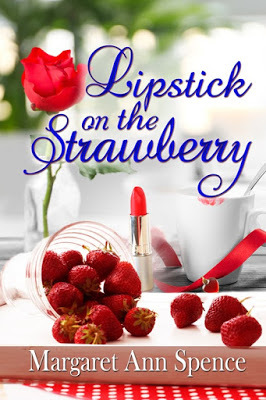
28. DOES THE PUBLISHING INDUSTRY FRUSTRATE YOU? It's confusing. There is traditional publishing, hybrid publishing, self- publishing. There are thousands of agents and millions of writers who are rejected by agents. There are still a million books published a year. So the bad news is that the competition is greater than ever. The good news is that there are many venues to publication.
29. DID YOU EVER THINK OF QUITTING? Yes. But I couldn't really stop once I'd started.
30. WHAT WAS YOUR FAVOURITE MANUSCRIPT TO WRITE? WHY? I've written a few essays that enabled me to understand what I actually thought. If that makes any sense.
31. HOW WOULD YOU DEFINE ‘SUCCESS’ AS A WRITER? Oh dear. For me, having been published as a journalist means that having a byline is no real definition of success. It's just doing your job. But publishing a novel is, since it is a new endeavor for me. The next hurdle would be selling a sufficient number. On the other hand, I know people who are stricken by illness or disability and for whom writing their name would be the definition of success.
32. WHAT SHOULD READERS WALK AWAY FROM YOUR BOOKS KNOWING? HOW SHOULD THEY FEEL? The message would be, I think, that we can never know another person's true motives or feelings, and so should not be judgmental.
33. WOULD YOU LIKE TO HAVE YOUR BOOKS MADE INTO MOVIES? EVER WRITTEN A SCREENPLAY? Of course. But where is the car chase? Or the gun battle?
34. HOW MUCH THOUGHT GOES INTO DESIGNING A BOOK COVER?
The cover should reflect the genre and general theme of the book. The Wild Rose Press asks authors for ideas, and then gives it over to a professional artist. I had no say in my cover after the original instruction, but I could not be more thrilled.
35. WHAT’S YOUR ULTIMATE DREAM? It would be good to sell enough books to feel that one had really arrived as a writer. Of course being on a best-seller list is the ultimate dream for any writer.
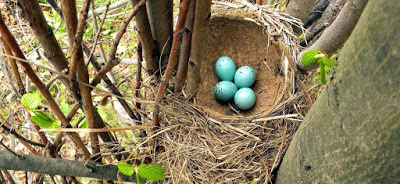
36. WRITING IS ONE THING. WHAT ABOUT MARKETING YOU, YOUR BOOKS AND YOUR BRAND? ANY THOUGHTS? I am new to this, but marketing one's book seems to be a pretty constant effort. It's difficult when one has been brought up to be modest.
37. ARE YOUR BOOKS SELF-PUBLISHED? No.
38. DESCRIBE YOURSELF IN FIVE WORDS. Mother, wife, sister, friend, writer.
39. WHAT PISSES YOU OFF MOST? Politicians.
40. WHAT IS THE TITLE OF THE LAST BOOK YOU READ? GOOD ONE? The Feast of Sorrow by Crystal King. This is a book about Apicius, the extravagant epicure of ancient Rome, and his fictional slave, Thracius.
41. WHAT WOULD BE THE VERY LAST SENTENCE YOU’D WRITE? I had a great time.
42. WHAT WOULD MAKE YOU HAPPIER THAN YOU ARE NOW? CARE TO SHARE? At my stage of life, the attitude is gratitude.
43. ANYTHING YOU’D LIKE TO ADD? Thank you, Clancy, for this opportunity to chat. You raise so many thoughtful questions about the writing life. Congratulations on your wonderful blog.

THE WILD ROSE PRESS
WEBSITE

Clancy's comment: My pleasure, Margaret. Love the cover of your book. It looks delicious. I also loved your answer to number 39!
Keep going.
I'm ...
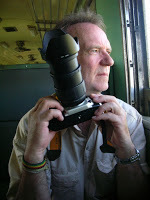

Published on August 14, 2017 14:59
August 13, 2017
14 August 2017 - CLANCY TUCKER'S WILDLIFE
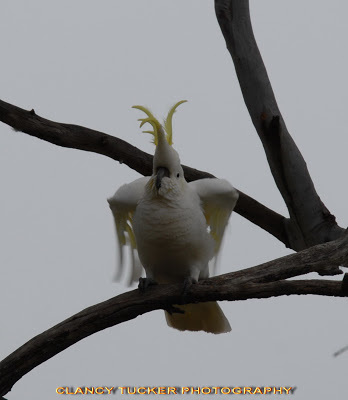
CLANCY TUCKER'SWILDLIFE
G'day folks,
Here are some of my most recent photographs of creatures I've found out and about.
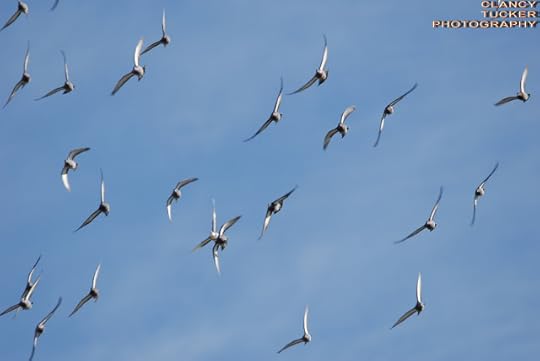

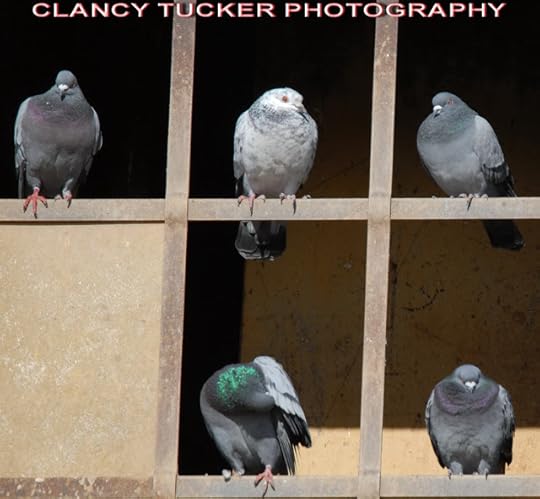

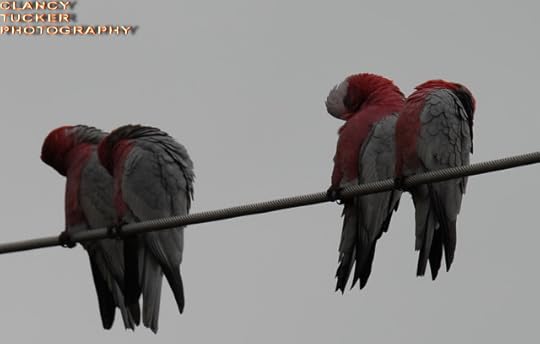



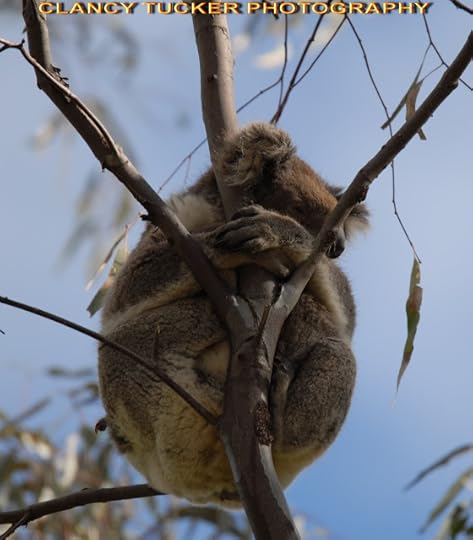
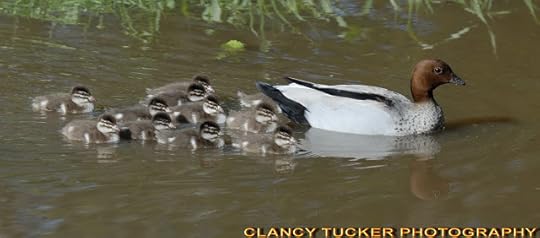

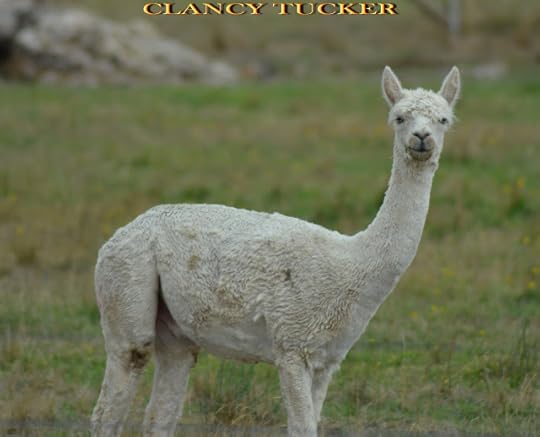
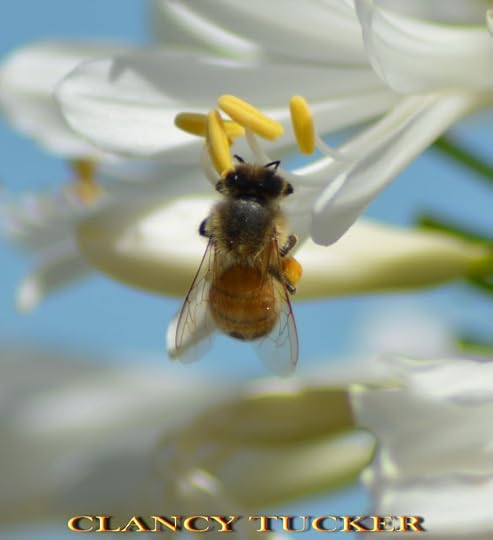




Clancy's comment: Amazing nature, eh?
I'm ...
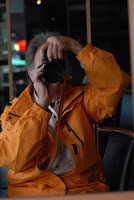
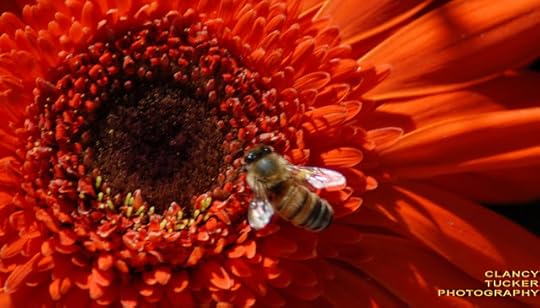
Published on August 13, 2017 15:05
August 12, 2017
13 August 2017 - AMAZING FACTS ABOUT OTTERS

AMAZING FACTS ABOUT OTTERS
G'day folks,
Welcome to some interesting facts about one of my favourite animals.
Otters are incredibly awesome and adorable especially when they are being watched exhibiting their intelligent and fascinating behaviors. In fact most of us get lost in their unique intelligence and characteristics that we forget there are other facts about this charming mammal. I mean fascinating facts which are not known by many that we need to familiarize ourselves with.

Sea otters have the thickest fur of all animals. They have as many as 1 million hairs in every square inch of their most dense body part, and they need every strand of hair as they are the only marine mammals that don’t have a layer of blubber as insulation against the freezing ocean water. However, it is not every part of their bodies that has so much hair. Places such as their paws dont have plenty of hairs, which is one of the many reasons they hold their paws up when sleeping –so to avoid water touching them and to conserve body heat.

Of course too much hair needs good grooming, so the animals spend most of their time eating, sleeping or grooming. Once they are not eating, resting or sleeping, they are usually busy grooming themselves to look good. They groom their furs to remain dry and as warm as possible.

Yes, Sea Otters hold hands so they don’t drift apart from each other. Usually, a mother and pup will cling to each other while sleeping to avoid drifting apart from one another. However when sea Otters are not holding hands while sleeping, they are using kelp instead, by wrapping themselves in long strands of kelp. They prefer to use long stands of Kelp which grow from the sea floor all the way up to the surface of the water as a mainstay to sleep without fear of drifting out to the open ocean.

Baby Otters can be as long as their mothers at birth making it difficult to differentiate the pups from the mothers. Many people who are not aware that the males and females stay separated often assume this is a couple rather than a mother and a pup.

Remember we said sea Otters take time grooming themselves? Mother sea Otters have double jobs of grooming to carry out. This is because she has to groom both herself and her fluffy baby. Baby Otters can’t groom themselves, and when their furs are not properly groomed, it can become tangled with pollutants, and this of course won’t let their skin warm and dry. So their mothers groom their own furs as well their babies’ furs which is no easy task.
Baby otters are incredibly adorable with cute names. They are called pups but can also be called kits or kittens. Whatever name you choose to call them, just know they are generally called charming!
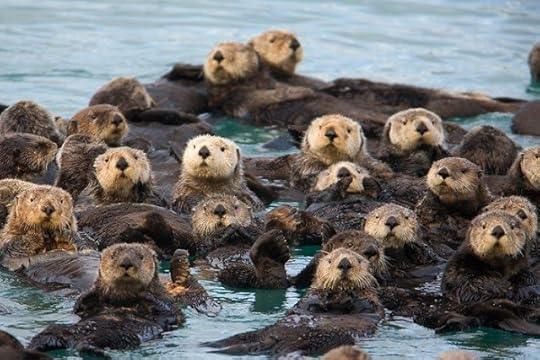
here are so many names for a group of otters including a bevy, family, lodge. They can also be called a romp depending on what their energy level and antics might entail. A group of Otters in water are best referred to as a raft. Male Otters are called boars, while females are called sows.
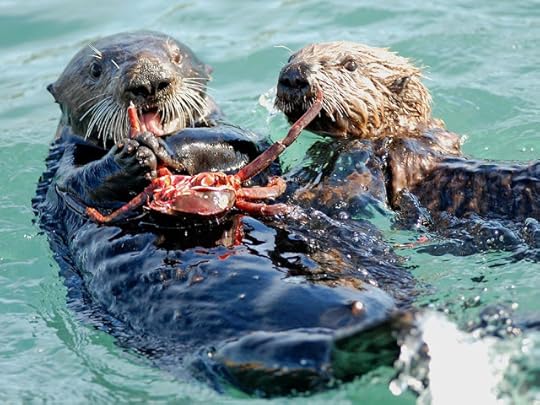
Also, Otters’ hidden homes are called a special name (or two). Their resting places are known as a hover or a couch, which are usually a bit bigger than a bed of reeds. They also use what’s referred to as a holt, tiny underground dens where Otters can take shelter, escape danger and where females raise their young ones.

It takes Pregnant Otters 60 to 86 days to have their babies. The newborn pup is often cared for by the mother, father and older offspring. Female Otters become sexually mature at about 2 years old while the males are at 3 years old. After one month of birth, the newborn pup can leave the holt and after two months, it is able to swim. The pup lives with its family for about one year. Otters live up to 10 or more years.

Clancy's comment: Cute and smart, eh?
I'm ...

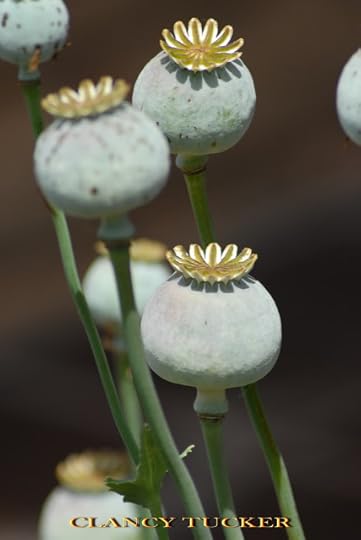
Published on August 12, 2017 15:20
August 11, 2017
12 August 2017 - DESERTED ISLAND FOR SALE

DESERTED ISLAND FOR SALE
G'day folks,
Welcome to some real estate that might suit a writer - Deserted in the turquoise Caribbean sea with a creepy abandoned castle, mermaid caves and mysterious tales of World War II German submarines– it’s Tintin meets Jack Sparrow; a place to let your imagination run riot … for $39,000,000.
Darby Island in the Bahamas, part of a chain of over 300 islands within the Exuma Cays. It’s been on and off the real estate market for a few years now, boasting 554 acres of paradise, 14 beaches, a disused air strip and a fair amount of strange history attached.

Before and during WWII, Darby Island was owned by a rumoured Nazi sympathiser and British hotelier, Sir Guy Baxter. King George of England gifted the island to Baxter upon his knighthood and it served as a lucrative plantation for him with livestock, cotton, palm oil, and more.
In 1938, he built an 8,000 square foot “castle” on the highest point of the island. According to some elderly locals, they remember seeing strange flashing lights during the war coming from the rooftop of the castle. Allegedly, it was discovered that Baxter was guiding German submarines prowling the Atlantic Oceans, allowing them to take refuge in Darby Island’s “exotic network of caves.”

Current owner and Palmetto Bay resident Rick Davis says, “There are still giant poured concrete moorings… Nobody knows why they’re there but I believe it was for the submarines.” Some of the employees of once worked on the plantation reportedly saw an elaborate radio and telegraph station inside the house.

The abandoned building is apparently still stuffed with mahogany floors and original furniture too.
Unless the locals invented the persona of Sir Guy Baxter entirely, I do find it odd that I can’t find any historical records of him online. For the ruler of what was supposedly one of the largest and most productive plantations in the islands at that time, you would think there might be some sort of clue to his existence.
Here are some more photographs:





Clancy's comment: Mm ... I'm surprised the CIA or some other secret organisation hasn't latched onto it.
I'm ...


Published on August 11, 2017 15:46
August 10, 2017
11 August 2017 - BRILLIANT BLACK & WHITE

BRILLIANT BLACK & WHITE
G'day folks,
Welcome to some more brilliant black and white photography from yesteryear.











Clancy's comment: Magnificent.
I'm ...


Published on August 10, 2017 15:20



